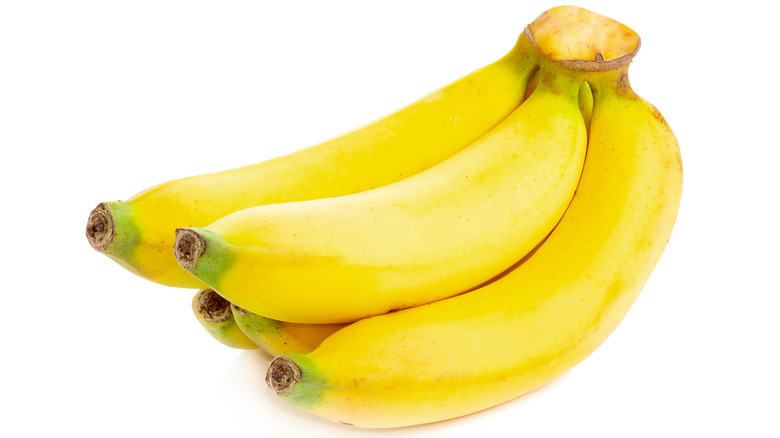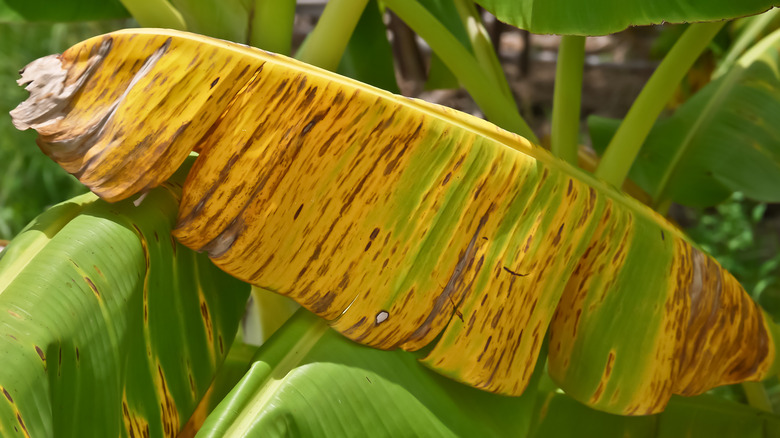Here's What Happened To The Gros Michel Banana
The Gros Michel variety of bananas was the world's top commercial strain until the late 1950s, per Encyclopedia Britannica. It's not like this was a short fling, either. According to Atlas Obscura, the Gros Michel had been the standard type in the U.S. since 1870. That means at least a couple of different generations viewed the Gros Michel as their definitive banana.
This is a shame, too, since the Gros Michel was reportedly one of the best-tasting, widely available bananas on the market. Its flavor has been described as creamy, rich, sweet, and tangy. It's a delicious dessert fruit. The variety was used to create the first banana split and was even the model for the artificial banana flavoring that still endures in other food products.
Alas, nowadays — and over the past half-century — Cavendish reigns supreme. The Cavendish is good, of course; it's a dessert variety, usually eaten fresh but also widely consumed chilled, fried, mashed, or baked into banana bread. Yet, supposedly, it can't compare to the Gros Michel. In the early '60s, companies were worried this replacement variety wouldn't catch on. Fast forward to today, and Cavendish is practically the only type widely sold in the U.S. Now, on average, Americans consume a hundred of them annually. How did we get here?
Panama disease is responsible for the loss of Gros Michel bananas
According to Gros Michel Banana, Fusarium wilt — also known as Panama disease — is to blame. The danger had been around for a long time, as well. Gros Michel was originally cultivated in the 1830s (it took a few decades to become the standard). Panama disease first caused banana losses in the 1890s in Costa Rica and its namesake country of Panama. By the 1950s, infected planting material had spread to many farms throughout Central America. Thus, we turned to the disease-resistant Cavendish.
Fusarium wilt is a fungal disease that spreads through the soil, per Frontiers in Plant Science. Once infected, banana trees begin to wilt, as evidenced by their yellowing, dying leaves. Fortunately, the Cavendish has mostly remained unaffected by this over the past half-century, but there are still reasons to be concerned. Like the Gros Michel, the Cavendish lacks genetic diversity, making them all vulnerable to any disease that successfully targets a single banana (via Encyclopedia Britannica). This is because bananas propagate through cloning — not the sci-fi kind, just the good old-fashioned farming technique. One strain of Fusarium wilt has already affected Cavendish for about three decades. Here's hoping that they don't go the way of Gros Michels!
To be fair, there are still Gros Michels in existence. They're just a lot harder to find than they used to be (via Atlas Obscura). Even so, the fact that popular fruit strains can dramatically diminish supply is pretty bananas.

